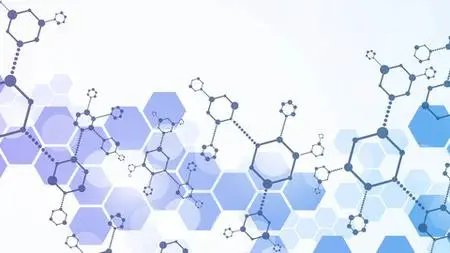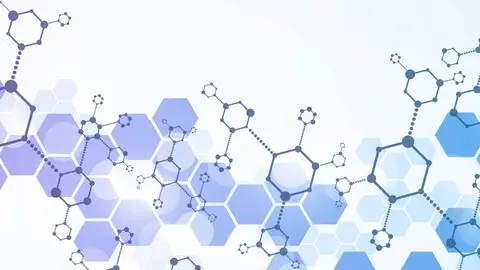Data Science With Python - A Complete Guide!: 3-In-1
Last updated 9/2018
MP4 | Video: h264, 1280x720 | Audio: AAC, 44.1 KHz
Language: English | Size: 3.12 GB | Duration: 9h 27m
Last updated 9/2018
MP4 | Video: h264, 1280x720 | Audio: AAC, 44.1 KHz
Language: English | Size: 3.12 GB | Duration: 9h 27m
Learn the fundamentals of data science and gain an in-depth understanding of data analysis with various Python packages
What you'll learn
Become proficient in working with real life data collected from different sources such as CSV files, websites, and databases
Work with regression, classification, clustering, supervised and unsupervised machine learning, and much more!
Understand time-series decomposition, forecasting, clustering, and classification.
Calculate the word frequencies using Data Science Techniques of Python.
Carry out cluster analysis using visualization methods such as Dendrogram and Silhouette plots.
Perform Cluster Analysis using Python Data Science Techniques
Requirements
Prior basic working knowledge of data analysis and Python will be useful.
Description
In today’s world, everyone wants to gain insights from the deluge of data coming their way. Data Science provides a way of finding these insights, and Python is one of the most popular languages for data mining, providing both power and flexibility in analysis. Thanks to its flexibility and vast popularity that data analysis, visualization, and Machine Learning can be easily carried out with Python.Starting out at the basic level, this Learning Path will take you through all the stages of data science in a step-by-step manner.This comprehensive 3-in-1 course is a comprehensive course packed with step-by-step instructions, working examples, and helpful advice on Data Science Techniques in Python. You’ll start off by creating effective data science projects and avoid common pitfalls with the help of examples and hints dictated by experience. You’ll learn how to develop statistical plots using Matplotlib and Seaborn to help you get insights into real size patterns hidden in data. Also explore useful libraries for visualization, Matplotlib and Seaborn, to get insights into data.By the end of this course, you’ll become an efficient data science practitioner by understanding Python's key concepts! Contents and OverviewThis training program includes 3 complete courses, carefully chosen to give you the most comprehensive training possible.The first course, Learning Python for Data Science, covers data analytics and machine learning using Python programming. In this course you’ll learn all the necessary libraries that make data analytics with Python. Learn the Numpy library used for numerical and scientific computation. Employ useful libraries for visualization, Matplotlib and Seaborn, to provide insights into data. Explore coding on real-life datasets, and implement your knowledge on projects.By the end of this course, you'll have embarked on a journey from data cleaning and preparation to creating summary tables, from visualization to machine learning and prediction. The second course, Python Data Science Essentials, covers fundamentals of data science with Python. This course takes you through all you need to know to succeed in data science using Python. Get insights into the core of Python data, including the latest versions of Jupyter Notebook, NumPy, Pandas and scikit-learn. Delve into building your essential Python 3.6 data science toolbox, using a single-source approach that will allow to work with Python 2.7 as well. Get to grips fast with data munging and preprocessing, and prepare for machine learning and visualization techniques.The third course, Practical Python Data Science Techniques, covers practical Techniques on Working with Data using Python. This video will begin from exploring your data using the different methods like data acquisition, data cleaning, data mining, machine learning, and data visualization, applied to a variety of different data types like structured data or free-form text. Deal with data with a time dimension and how to build a recommendation system as well as about supervised learning problems (regression and classification) and unsupervised learning problems (clustering). Perform text preprocessing steps that are necessary for every text analysis applications. Specifically, you’ll cover tokenization, stopword removal, stemming and other preprocessing techniques.By the end of the video course, you will become an expert in Data Science Techniques using Python.By the end of the course, you’ll learn the fundamentals of data science and gain an in-depth understanding of data analysis with various Python packages. About the AuthorsIlyas Ustun is a data scientist. He is passionate about creating data-driven analytical solutions that are of outstanding merit. Visualization is his favorite. After all, a picture is worth a thousand words. He has over 5 years of data analytics experience in various fields like transportation, vehicle re-identification, smartphone sensors, motion detection, and digital agriculture. His Ph.D. dissertation focused on developing robust machine learning models in detecting vehicle motion from smartphone accelerometer data (without using GPS). In his spare time, he loves to swim and enjoy the nature. He loves gardening and his dream is to have a house with a small garden so he can fill it in with all kind of flowers.Luca Massaron is a data scientist and a marketing research director specialized in multivariate statistical analysis, machine learning and customer insight with over a decade of experience in solving real world problems and in generating value for stakeholders by applying reasoning, statistics, data mining and algorithms. From being a pioneer of Web audience analysis in Italy to achieving the rank of top ten Kaggler, he has always been passionate about everything regarding data and analysis and about demonstrating the potentiality of data-driven knowledge discovery to both experts and non-experts. Favouring simplicity over unnecessary sophistication, he believes that a lot can be achieved in data science just by doing the essential.Marco Bonzanini is a data scientist based in London, United Kingdom. He holds a Ph.D. in information retrieval from the Queen Mary University of London. He specializes in text analytics and search applications, and over the years, he has enjoyed working on a variety of information management and data science problems. He maintains a personal blog, where he discusses different technical topics, mainly around Python, text analytics, and data science. When not working on Python projects, he likes to engage with the community at PyData conferences and meetups, and he also enjoys brewing homemade beer.
Overview
Section 1: Learning Python for Data Science
Lecture 1 The Course Overview
Lecture 2 What Is Data Science?
Lecture 3 Python Data Science Ecosystem
Lecture 4 Installing Anaconda
Lecture 5 Starting Jupyter
Lecture 6 Basics of Jupyter
Lecture 7 Markdown Syntax
Lecture 8 1D Arrays with NumPy
Lecture 9 2D Arrays with NumPy
Lecture 10 Functions in NumPy
Lecture 11 Random Numbers and Distributions in NumPy
Lecture 12 Create DataFrames
Lecture 13 Read in Data Files
Lecture 14 Subsetting DataFrames
Lecture 15 Boolean Indexing in DataFrames
Lecture 16 Summarizing and Grouping Data
Lecture 17 Matplotlib Introduction
Lecture 18 Graphs with Matplotlib
Lecture 19 Graphs with Seaborn
Lecture 20 Graphs with Pandas
Lecture 21 Machine Learning
Lecture 22 Types of Machine Learning
Lecture 23 Introduction to Scikit-learn
Lecture 24 Linear Regression
Lecture 25 Logistic Regression
Lecture 26 K-Nearest Neighbors
Lecture 27 Decision Trees
Lecture 28 Random Forest
Lecture 29 K-Means Clustering
Lecture 30 Preparing Data for Machine Learning
Lecture 31 Performance Metrics
Lecture 32 Bias-Variance Tradeoff
Lecture 33 Cross-Validation
Lecture 34 Grid Search
Lecture 35 Wrap Up
Section 2: Python Data Science Essentials
Lecture 36 The Course Overview
Lecture 37 Introducing Data Science and Python
Lecture 38 Getting Ready
Lecture 39 A Glance at the Essential Packages
Lecture 40 Introducing the Jupyter Notebook
Lecture 41 Scikit-learn Toy Datasets
Lecture 42 Data Loading and Preprocessing
Lecture 43 Working with Categorical and Text Data
Lecture 44 Creating NumPy Arrays
Lecture 45 NumPy's Fast Operations and Computations
Lecture 46 Introducing EDA
Lecture 47 Building New Features
Lecture 48 Dimensionality Reduction
Lecture 49 The Detection and Treatment of Outliers
Lecture 50 Validation Metrics
Lecture 51 Testing and Validating
Lecture 52 Cross-Validation
Lecture 53 Hyperparameter Optimization
Lecture 54 Feature Selection
Lecture 55 Wrapping Everything in a Pipeline
Lecture 56 Preparing Tools and Datasets
Lecture 57 Linear and Logistic Regression
Lecture 58 Naive Bayes
Lecture 59 K-Nearest Neighbors
Lecture 60 An Overview of Unsupervised Learning
Section 3: Practical Python Data Science Techniques
Lecture 61 The Course Overview
Lecture 62 Loading Data into Python
Lecture 63 A New Data Set – Exploratory Analysis
Lecture 64 Getting Data in the Right Shape – Preprocessing and Cleaning
Lecture 65 Tokenization – From Documents to Words
Lecture 66 Stop-Words and Punctuation Removal
Lecture 67 Text Normalization
Lecture 68 Calculating Word Frequencies
Lecture 69 Brief Overview of scikit-learn
Lecture 70 Regression Analysis – Predicting a Quantity
Lecture 71 Binary Classification – Predicting a Label (Out of Two)
Lecture 72 Multi-Class Classification - Predicting a Label (Out of Many)
Lecture 73 Cluster Analysis – Grouping Similar Items
Lecture 74 Time Series Analysis with Pandas
Lecture 75 Building a Movie Recommendation System
Python programmer, aspiring data scientist who wants to learn the fundamentals of data science and gain an in-depth understanding of data analysis with Python.



